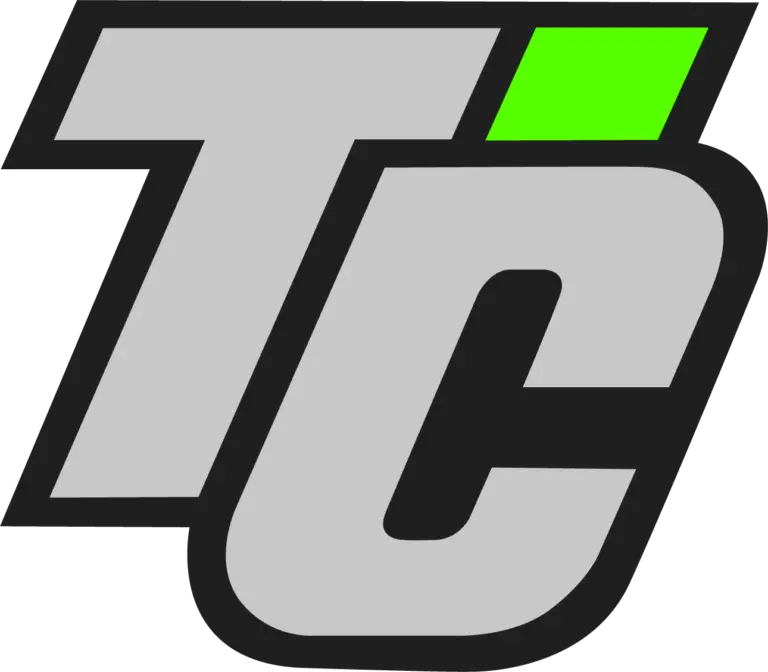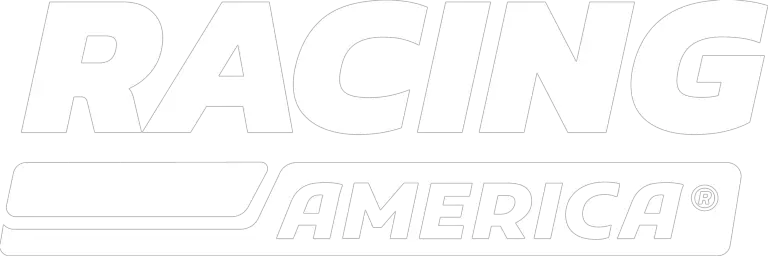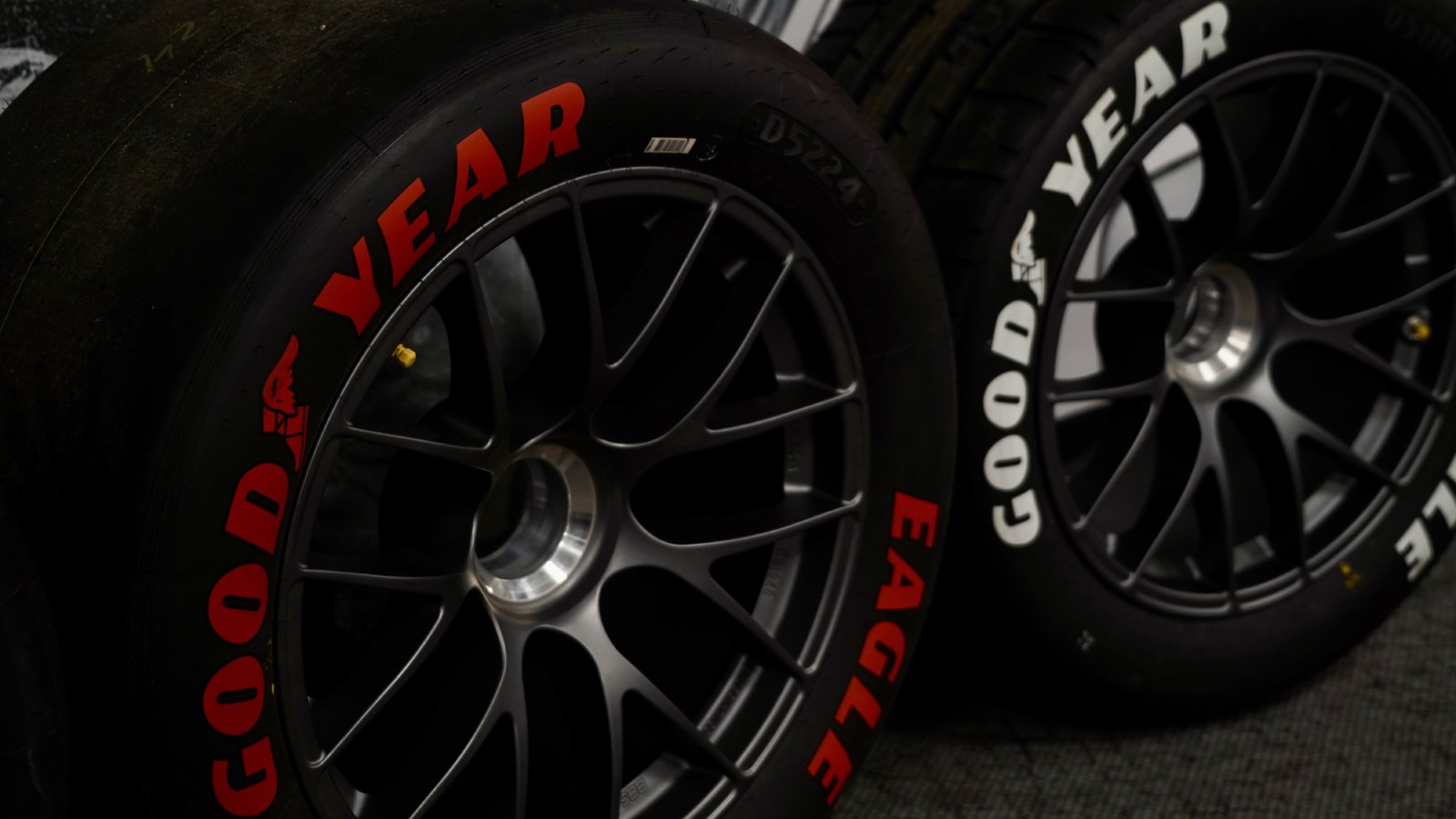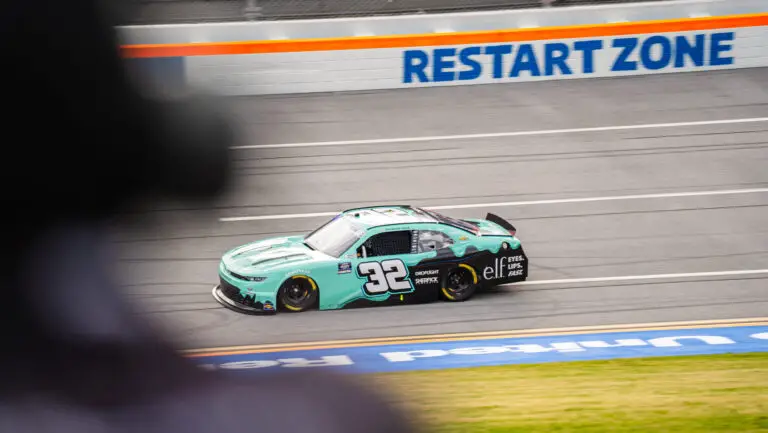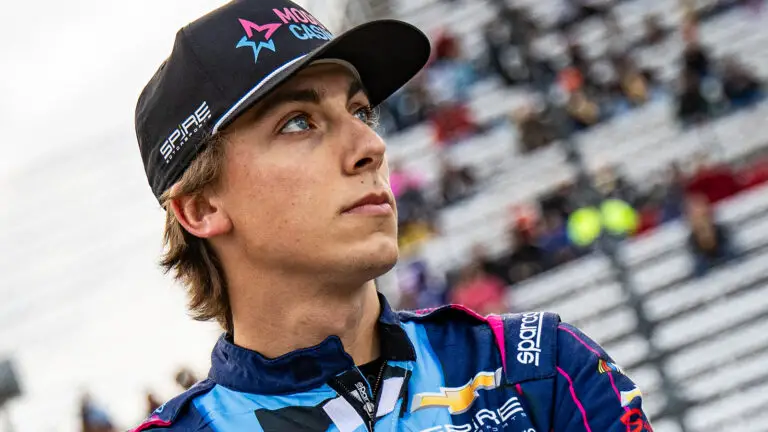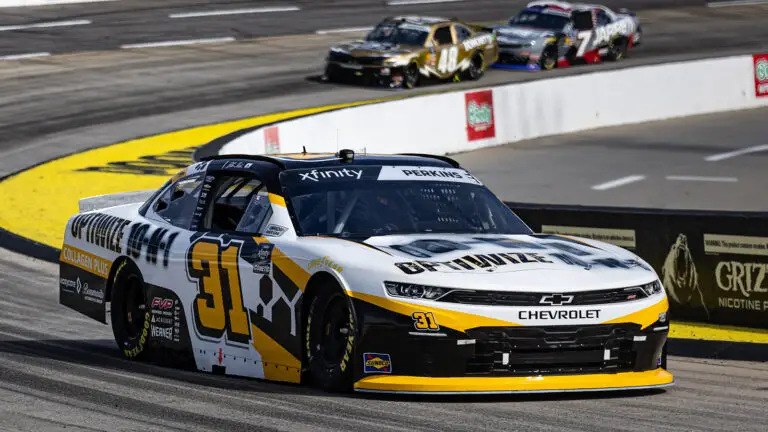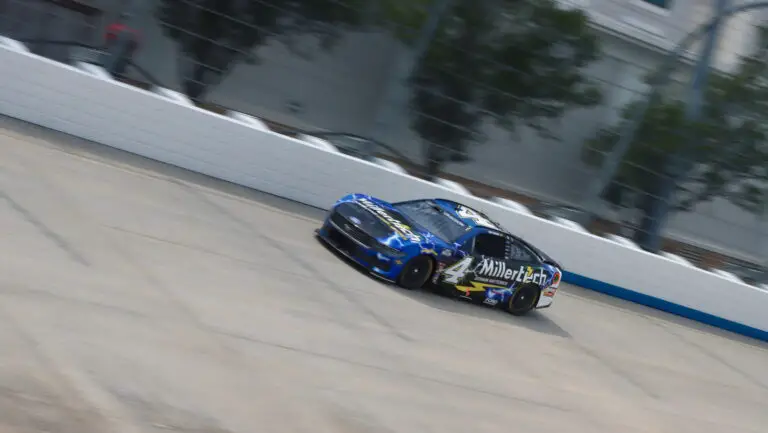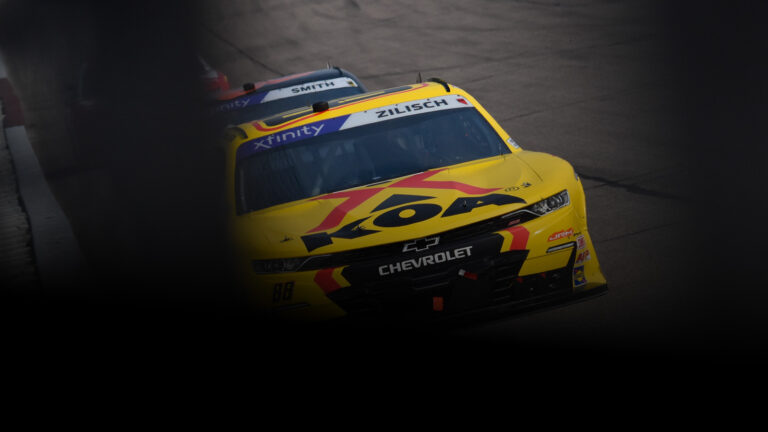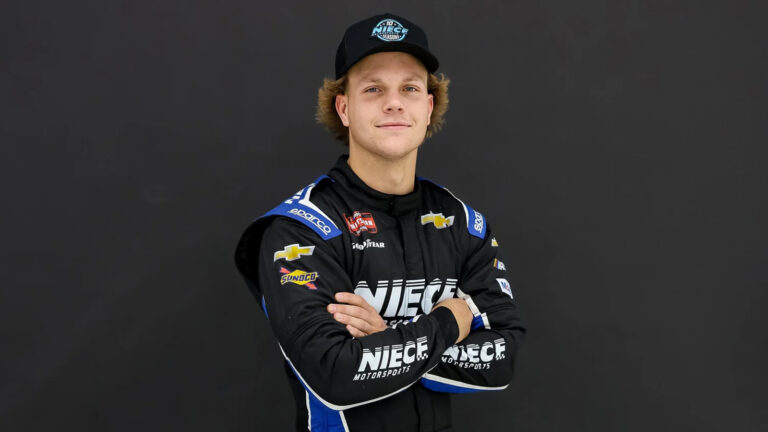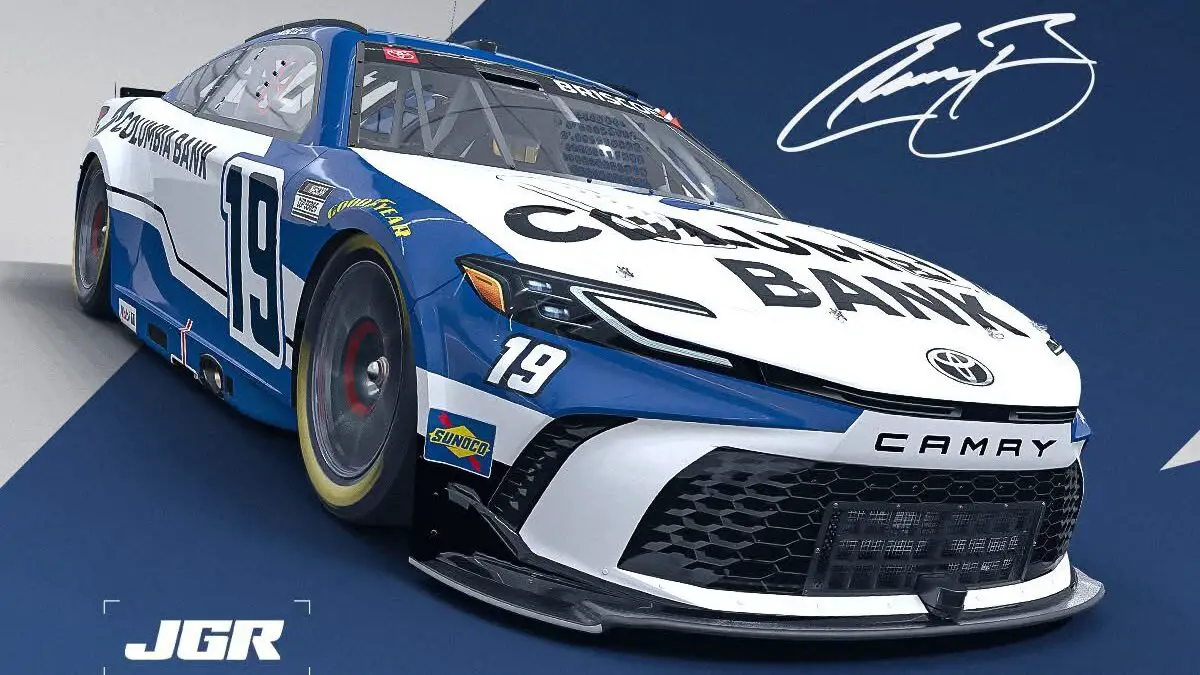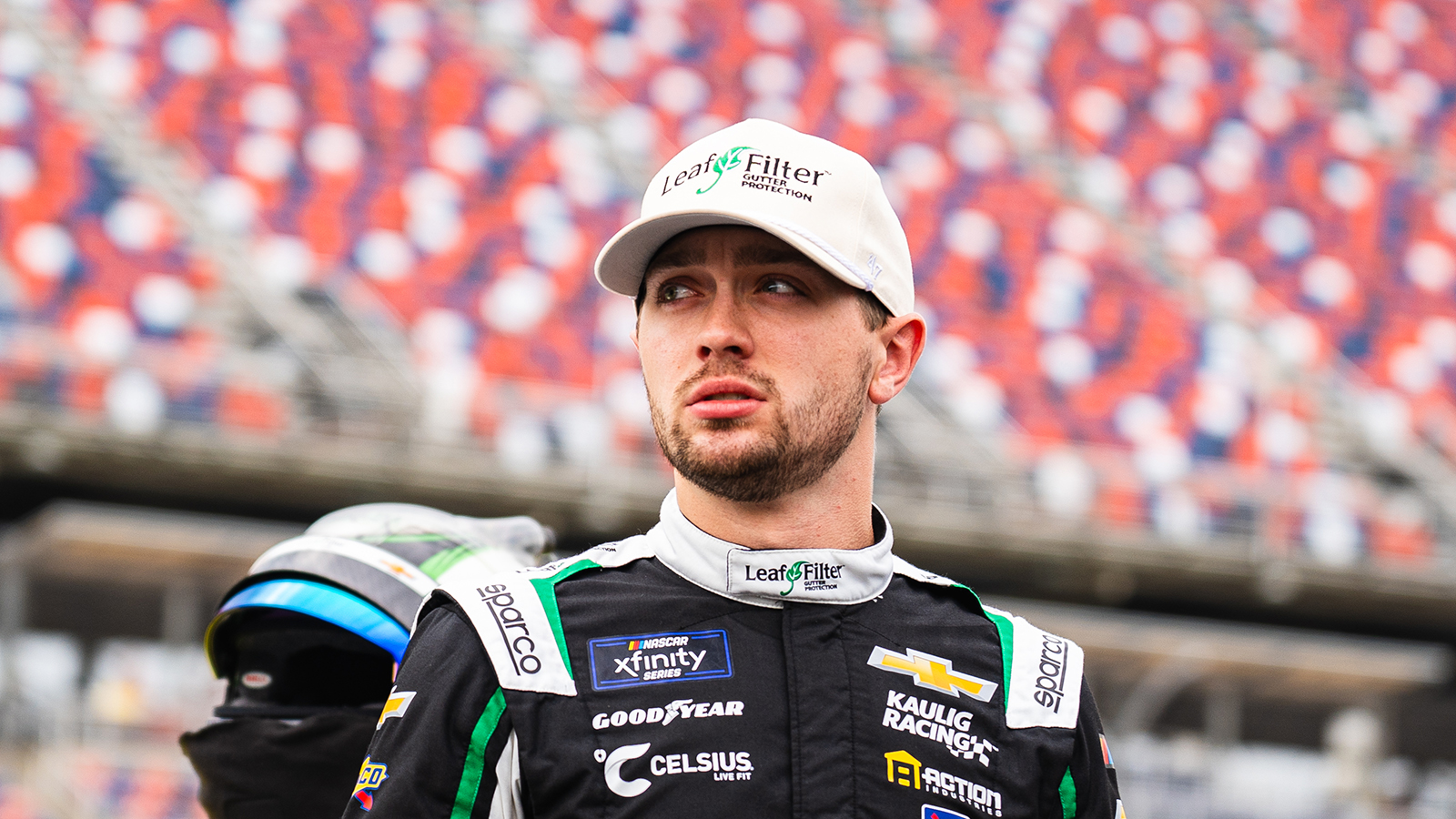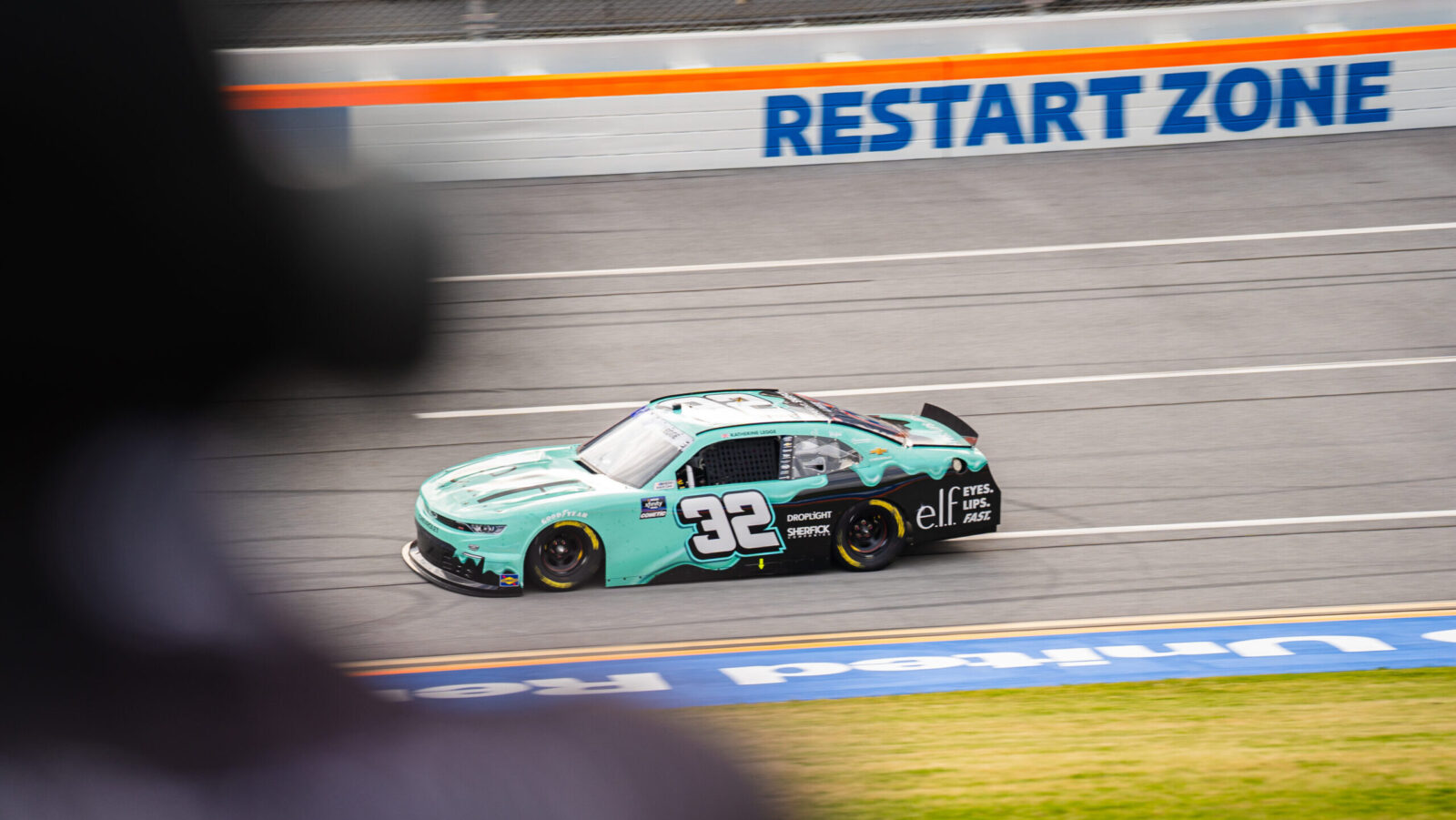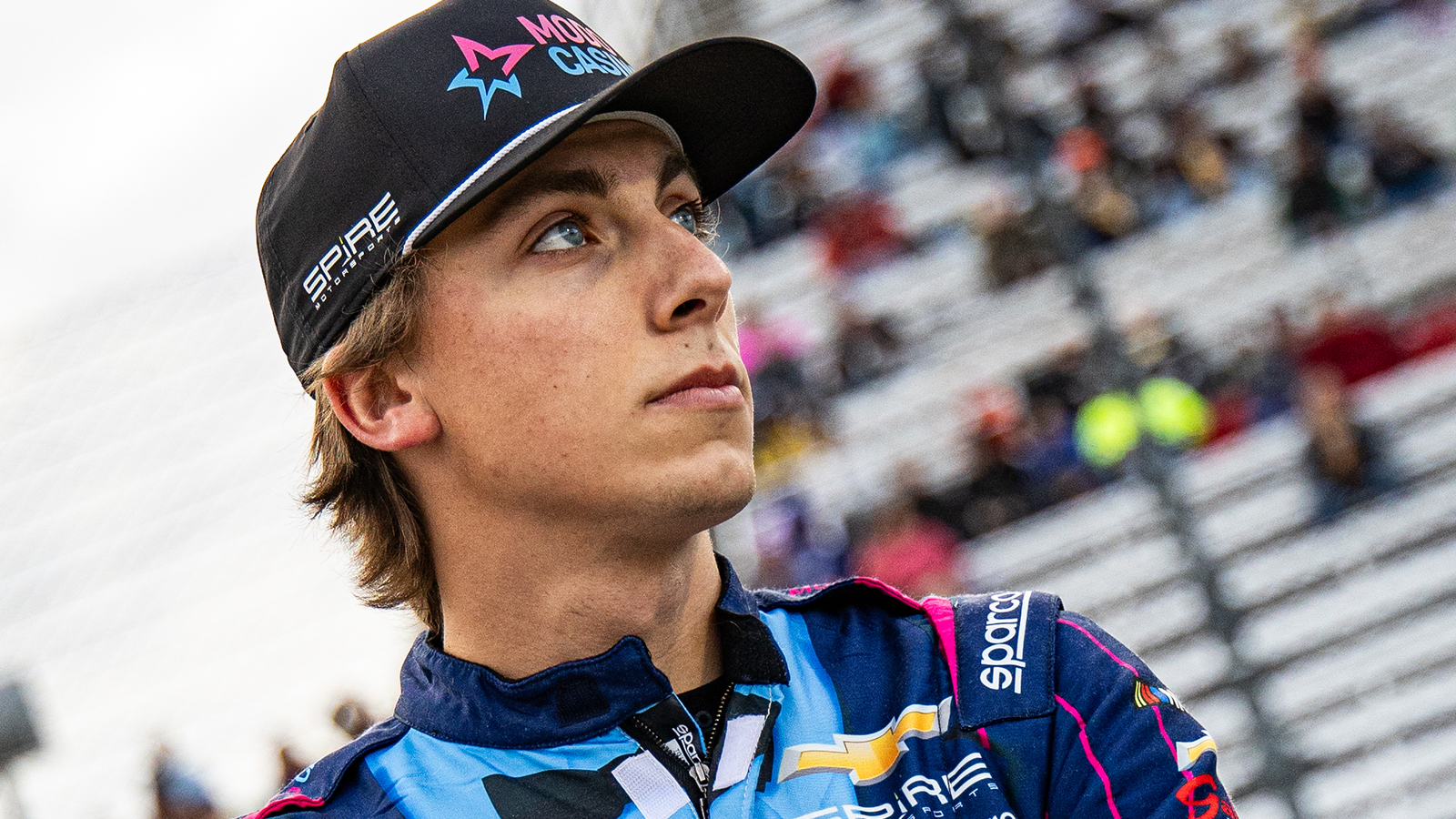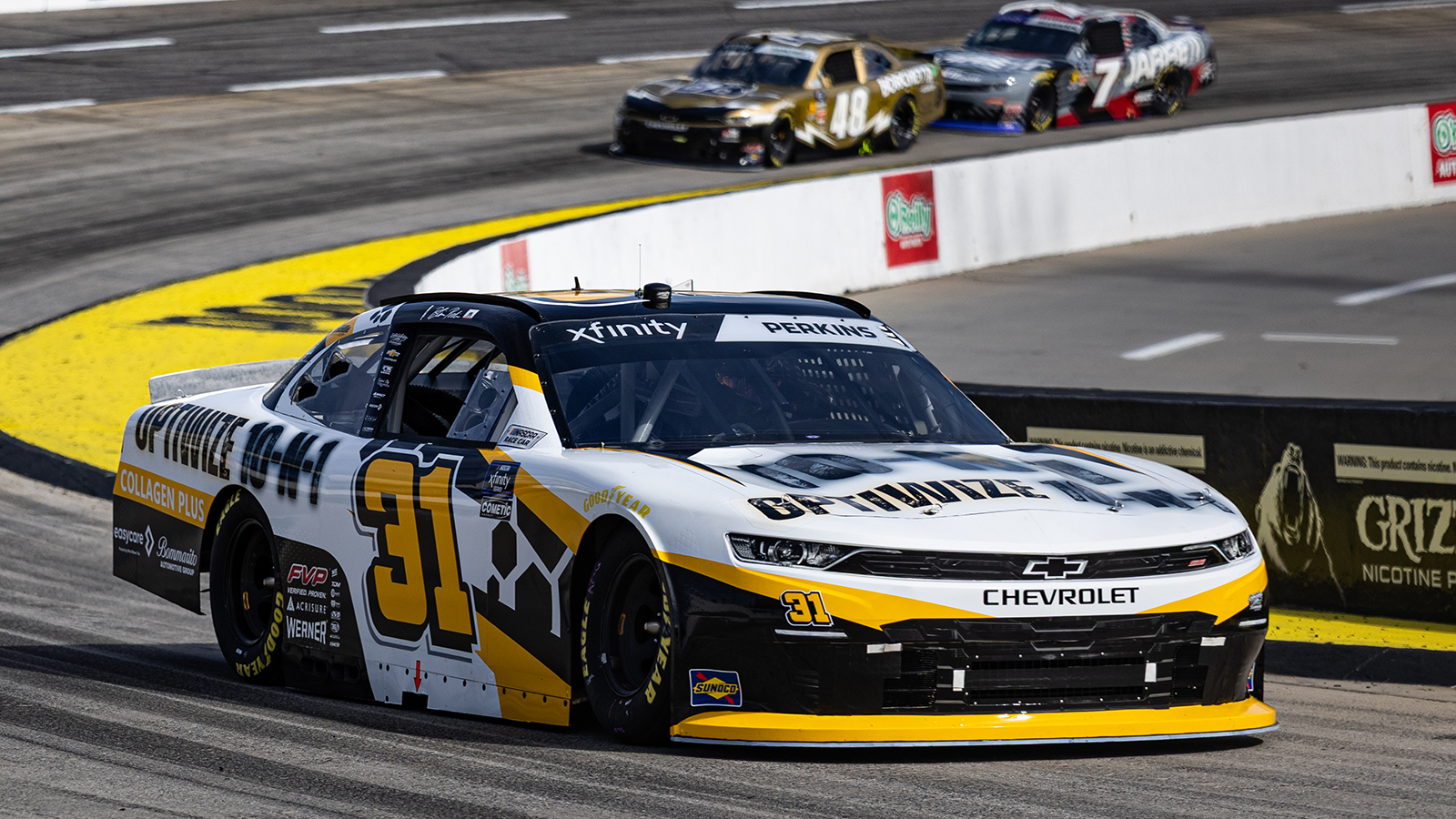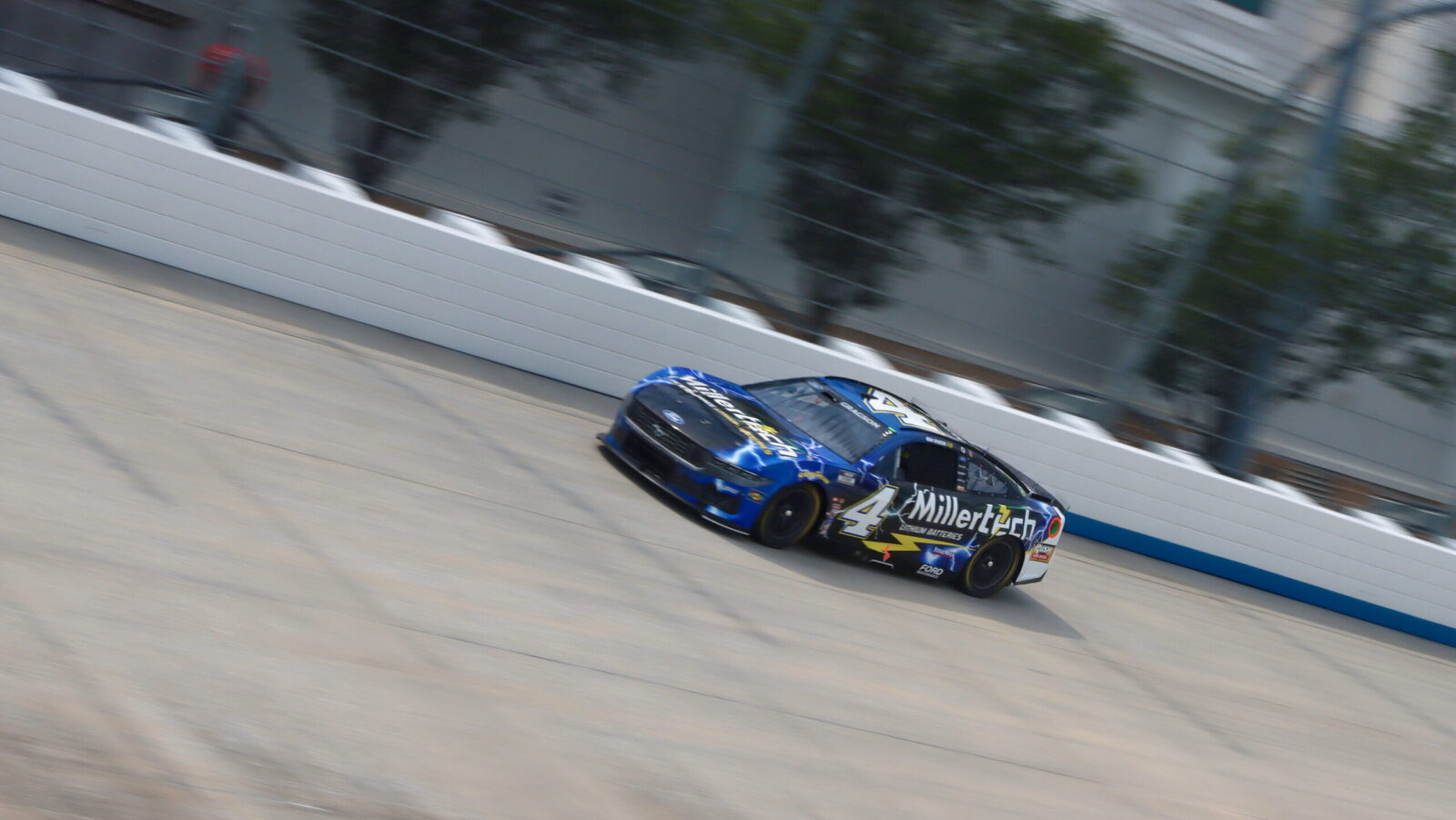While the concept of multiple tire compounds isn’t a new idea in the NASCAR Cup Series, as the experiment was attempted and epically failed in the 2017 NASCAR All-Star Race, we don’t seem to be experiencing exact deja vu seven years later. At least, not yet.
After Friday’s All-Star / All-Star Open joint practice session, it seems like the two tire compounds that Goodyear brought to North Wilkesboro Speedway have enough difference in the speed and fall off over a long run that it very well could lead to a little bit of excitement down the stretch in Sunday’s NASCAR All-Star Race.
Make no mistake, qualifying and track position will still be key, but the prime and option tires should allow for comers and goers throughout the exhibition race.
“I think qualifying still is going to be a big deal, track position definitely is still going to be a big deal. But it looks like we’ve got tires that have good fall off, and definitely a difference in speed between the two sets,” Denny Hamlin said after decompressing from practice. “Certainly some options there, and we should see some cars move around and hopefully some overtaking.”
Hamlin’s Joe Gibbs Racing teammate Martin Truex Jr. feels strategy will definitely come into play as teams attempt to make sure they have the softer faster tires at the right times in Sunday’s race.
“The softer one is significantly faster, and it falls off more. We’ll have to be strategic in how we use it, I suppose,” Truex concluded.
While the big buzz was about the separation in speed between the two tire compounds, William Byron, the driver of the No. 24 Hendrick Motorsports Chevrolet Camaro, is more curious about differing balances that come with the different tire compounds.
“I feel like they’re — to me, just my personal experience, the option tire, red tire, it had a couple of tenths more on the short run, but then quickly got to the same pace. If you need to go on a restart, that might be the tire you want. But I think it has to do with track position and kind of what your balance is. Because there was a balance difference I thought between the two tires. It’ll be interesting to see how that plays out,” Byron explained.
Teams will be allotted two sets of the standard yellow lettered prime tires and two sets of softer red lettered option tires for the duration of the 200-lap race on Sunday.
Coming into this event, the short track package in the NASCAR Cup Series has put on subpar events since the adaptation of the Next Gen car in 2022. The hope was that the multiple tire compounds could help alleviate some of the issues, and potentially be the thing that fixes the racing product on short tracks.
Hamlin feels optimistic after what he saw in the session.
“Yeah, 100 percent. I think absolutely there is something to be learned here,” Hamlin responded when asked if this could be a legitimate option elsewhere. “We ran a tire that there’s no way they would have ever felt comfortable with us running especially at a new paved track like this. We ran over 40 laps, and we didn’t see any cords or anything. So, I’m very happy with what we saw.”
Obviously, with the championship being decided on the 1-mile Phoenix Raceway, which features the Next Gen short track rules package, Hamlin hopes whatever is learned this weekend at North Wilkesboro can be applied to Phoenix.
“Certainly, hopefully they can learn something from here to take to Phoenix or something,” Hamlin explained. “The biggest thing I noticed is we had left side heat. That is something we haven’t had on our short track cars in quite some time. With the left sides getting hot, it’s going to make new tires matter. It’s going to make passing easier. As long as they stay as aggressive as they can on the left sides, this is a step in the right direction. And good job for Goodyear.”
While Hamlin was all-in on his praise for the new tires, Truex and Byron were a bit more reserved. Truex feels there is a chance the tire wear of the softer tire will significantly decrease once teams get a chance to tinker further on their cars.
“We did 40 [laps], and I feel like if we adjust our car, it’ll have a lot less fall off than it did,” Truex stated. “The first crack at it is always like, ‘Oh, that was alright,’ then you get working on it and it’s like, ‘Okay, it doesn’t fall off at all.’ I don’t know. We’ll just have to wait and see. The track is rubbering in, and changing, a lot is going on. We’ll see.”
Byron isn’t totally sold that this is the fix for the issues that have plagued the short track package, but he feels that Goodyear could be even more aggressive with the tires in the future if this is the path the tire maker decides to go down.
“We’ll see. I think they need to keep going more,” Byron said. “This tire, it seems, we have a hard time getting it to fall off. It just has a lot of tire and grip.”
Will the multiple tire compounds be the magical cure for what has been an ailing short track package? As Byron and Truex said, we’ll see. It’s still early in the weekend, but what we saw on Friday was certainly encouraging, especially when contrasted to the 2017 attempt at this same experiment.
